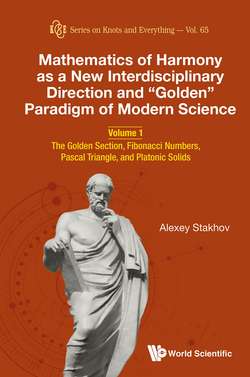Читать книгу Mathematics of Harmony as a New Interdisciplinary Direction and “Golden” Paradigm of Modern Science - Alexey Stakhov - Страница 12
На сайте Литреса книга снята с продажи.
Introduction of the Term Mathematics of Harmony
ОглавлениеIn the late 20th century, to denote the mathematical doctrine of Nature, created by the ancient Greeks, the term Mathematics of Harmony was introduced. It should be noted that this term was chosen very successfully because it reflected the main idea of the ancient Greek science, the Harmonization of Mathematics [68]. For the first time, this term was introduced in the small article “Harmony of spheres”, placed in The Oxford Dictionary of Philosophy [103]. In this article, the concept of Mathematics of Harmony was associated with the Harmony of spheres, which was, also called in Latin as “harmonica mundi” or “musica mundana” [10]. The Harmony of spheres is the ancient and medieval doctrine on the musical and mathematical structure of the Cosmos, which goes back to the Pythagorean and Platonic philosophical traditions.
Another mention about the Mathematics of Harmony in the connection to the ancient Greek mathematics is found in the book by Vladimir Dimitrov, A New Kind of Social Science, published in 2005 [44]. It is important to emphasize that in Ref. [44], the concept of Mathematics of Harmony is directly associated with the golden section, the most important mathematical discovery of the ancient science in the field of Harmony. This discovery at that time was called “dividing a segment into the extreme and mean ratio” [32].
From Refs. [44, 45], it is evident that prominent thinkers, scientists and mathematicians took part in the development of the Mathematics of Harmony for several millennia: Pythagoras, Plato, Euclid, Fibonacci, Pacioli, Kepler, Cassini, Binet, Lucas, Klein, and in the 20th century the well-known mathematicians Coxeter [7], Vorobyov [8], Hoggatt [9], Vaida [11], Knuth [123], and so on. And we cannot ignore this historical fact.
